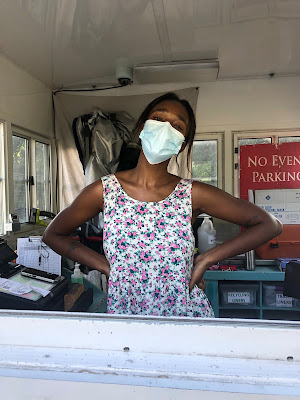Why My Neon Technology is Special
It all started in Austin, on a rare snowy January
afternoon in 1985 while
tripping my brains out on mushrooms.
Arriving home from an extraordinarily fun day of burning donuts all over the icy UT parking lot in my dead grandmother's Cutlass convertible, with my pal, Mike.
This was just after roaming the empty practice rooms of the Butler School of Music, playing random concertos on various Steinways.
Back home the red light was blinking on my answering machine..
"G'day Been, Would you loike to come to New Zeeealend and wook in houa neon shop heah - in Auckland? We'd love to have you, mate!"
OMG - Hell YES!
After six months of working with the consulate, I finally got there on a one year work visa, thanks to
Duncan Reed who I'd met at Dean Blazek's Northern Neon Workshop in Antigo,
Duncan Reed who I'd met at Dean Blazek's Northern Neon Workshop in Antigo,
Wisconsin about a year before.
Duncan (Kiwi) hooked me up because he'd had enough of the slow NZ lifestyle.
He had big plans and high hopes for his next stop, Sydney, Australia, and by me taking his glassbending job, I was his ticket out.
One day I was snooping around the shop's glass supply, which was totally exotic to me.
All I'd ever seen was the USA's industry standard - EGL, FMS, Voltarc and some old Corning
and GE classic colored glass.
But they had Masonlite out of England - eye candy with colors I'd never
seen before.
Waving a SW-UV around their glass stash, I noticed a piece of German (Bromo blue-purple)
tubing. What was remarkable about this was of course it's beautiful indigo/magenta color, but more
interesting was the phenomena of this tubing's phosphor coating being capable of glowing red with a
blue UV light.. Up till then, I'd only seen neon gas make reds, oranges and pinks.
Argon and Hg emitted a UV blue light that only lit up "cold " phosphor coated colors like green,
blue, yellow, white etc... But here was a phosphor that went both ways!
This really stoked my curiosity. One thing led to another over the course of
the next eight years and then the National Endowment of Art (NEA) awarded me a fellowship for what
is now my signature style that I call "Night Sticks" or "Spirit Antenna" (depending on their use)
and well, the rest is history.
Here's Percy Echol's podcast "Taming Lightning", where I tell the whole story.
My final Report to the National Endowment for the Arts...
Everything I learned during my fellowship in one tube!
See Phosphor research items below.
My paint set


































